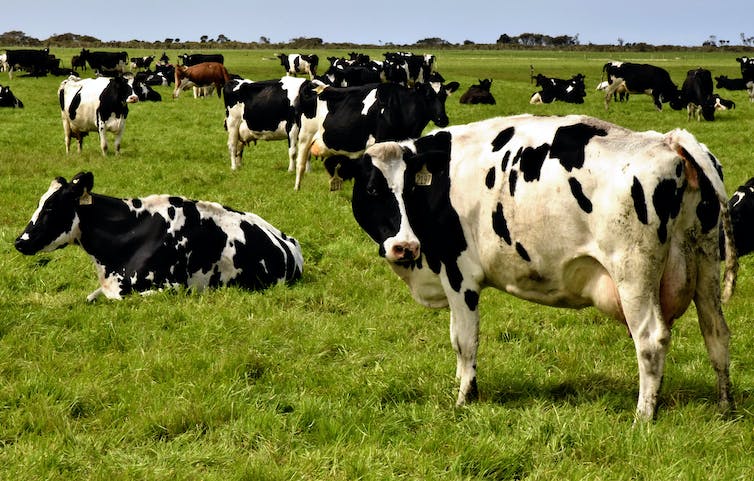When Russia invaded Ukraine in early 2022, German Chancellor Olaf Scholtz proclaimed a “Zeitenwende”, or historical turning point. It resulted in Germany’s first ever official national security strategy.
The equivalent wake-up call in New Zealand was the 2019 Christchurch terror attack. This hammered home, in the most horrific way, that geographic distance and small size no longer protected the country in ways they might have once.
While some countries, such as the United States and Britain, have had serious national security strategies in place for a long time, for others it takes a shock. In 2018, before the Christchurch atrocity, New Zealand’s national threat level was set at “low”.
The Defence Policy Statement from the same year, although far from naïve, reflected a simpler world. This changed with the more sober 2021 Defence Assessment, followed by the defence policy review announced last year into whether current policy, strategy and capability were fit for purpose.
The suite of documents released today – including a first ever national security strategy – provides the answer. In short, New Zealand now faces a very different and rapidly changing world. Business as usual is no longer considered an option.
A new security strategy
In July, the Ministry of Foreign Affairs released its strategic foreign policy assessment, Navigating a Shifting World-Te whakatere i tētahi ao hurihuri. It looks ahead to 2025 and is “intended as a contribution to the national conversation on foreign policy”.
The national security strategy, Secure Together-Tō Tātou Korowai Manaaki, along with a new defence policy and strategy statement, rounds out this revised New Zealand worldview. A soon-to-be-released threat assessment from the security intelligence agencies will complete the picture.
Announcing the new strategy, Defence Minister Andrew Little said: “In 2023 we do not live in a benign strategic environment.” He went on to say:
Aotearoa New Zealand is facing more geostrategic challenges than we have had in decades – climate change, terrorism, cyberattacks, transnational crime, mis- and disinformation, and competition in our region which, up until recently, we thought was protected by its remoteness.
While the new assessments and strategic statements come from different state agencies, they nonetheless speak clearly and coherently about the risks to New Zealand’s security. The national wake-up call, then, rests on four broad pillars of understanding.
1. Geopolitical uniqueness
The first consistent theme concerns New Zealand’s uniqueness. It is a liberal, multicultural democracy based on a bicultural relationship and te Tiriti o Waitangi/Treaty of Waitangi. The nation’s strong sovereign identity is anchored in the Pacific, and it speaks with a strong and independent voice.
The New Zealand people and their socially cohesive society are the country’s most valuable assets. The obligation of guardianship over these, for both present and future generations, means being better prepared for potential external and internal threats.
Ensuring national resilience and security underpins the government’s unprecedented (at least for this century) planning for and prioritising of that preparedness.
Approach with caution: why NZ should be wary of buying into the AUKUS security pact
2. Times are changing
Getty Images
The new strategy identifies 12 national security issues, ranging from terrorism and climate change to attempts to subvert New Zealand democracy. While no one challenge is expressly prioritised, there is a clear emphasis on geostrategic competition and the threats to a rules-based international system.
Many of the assumptions about global and regional affairs that have underpinned New Zealand’s foreign policy for a generation or more are coming under real and sustained pressure.
The rules-based order that has allowed the country to thrive peacefully is under stress. The risk of open conflict is heightened, with the wider Indo-Pacific region at the centre of geopolitical contests.
There are also unpredictable but significant risks – especially economic ones – from those tensions, even without a descent into military conflict. And there is the potential for more than one negative event to occur at the same time.
The most significant defence review in 40 years positions Australia for complex threats in a changing region
3. Partnerships matter
New Zealand’s security has to be collective, and there is no lurching towards isolationism. More collaborations are likely to address shared security challenges.
The most important relationship is with Australia, which is also rapidly upgrading its defence capabilities. As New Zealand’s closest partner and only formal ally, Australia is “indispensable to New Zealand’s national security”.
The US relationship is also very important, of course. Throughout the new documents, the US is variously described as a “crucial” defence partner in general, and “critical for New Zealand’s security” in the Indo-Pacific and Pacific regions.
Other less immediately obvious security relationships are also noted, including with Singapore, Japan and NATO. The Five Eyes intelligence network (which also includes Britain and Canada) is cast as “an invaluable support to our understanding and ability to respond to emerging and complex security issues”.
The newer multinational security partnerships – namely AUKUS and the “Quad” (US, India, Japan and Australia) – are mentioned. But none of the new documents explicitly state whether New Zealand will or will not join them in the future – other than to say they “may” provide the opportunity for New Zealand to further pursue its interests.
But the Defence Force needs to improve its combat readiness and effectiveness, as well as other military capabilities, and increase its presence in the Pacific. It’s clear greater investment is needed in both the short and medium term, but no dollar figures are attached.
ANZUS at 70: Together for decades, US, Australia, New Zealand now face different challenges from China
4. Realism over China
The damage Russia’s invasion of Ukraine has caused to the international legal framework is clear. But the new strategies and assessments repeatedly highlight the challenge of China.
While peaceful cooperation in areas of shared interest is deemed desirable, China is also recognised as being major driver of geopolitical change, especially in its willingness to be more assertive and willing to challenge existing international rules and norms.
Finally, aspects of China’s operations in the Pacific threaten to fundamentally alter the regional strategic balance. New Zealand must plan and be prepared for this.
Overall, the new assessments and strategy represent a turning point: a recognition security threats are rising and will require new approaches. While the detail is not fleshed out, and no doubt there will be partisan debate as the October election nears, the need for real change has rarely been made so clear.



